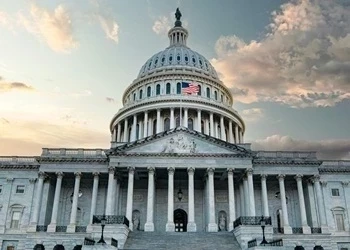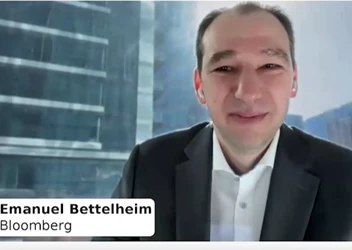Data Science at Netflix: How Advanced Data & Analytics Helps Netflix Generate Billions
Why data science is central to Netflix's Business Success
Add bookmark
With over 203.67 million subscribers worldwide, Netflix has reigned as the #1 Over-the-Top (OTT) streaming content platform since its launch in 2007. The secret to Netflix’s success? Data and analytics.
Using advanced data and analytics, Netflix is able to:
- Provide users with personalized movie and TV show recommendations
- Predict the popularity of original content to before it greenlights it (or not)
- Personalize marketing content such as trailers and thumbnail images
- Optimize production planning
- And, of course, enhance general technical and business decision making
How do data scientists fit into Netflix’s overall organizational structure?
Netflix’s Data Science and Engineering group is responsible for implementing analytics at scale. Instead of operating like a classic department of COE, data scientists are embedded into business units: product development, content, membership, studio marketing or platform.
In line with its “Context not Control” company culture, data scientists at Netflix are granted a significant amount of autonomy. This means it’s up to them to choose and prioritize projects that will have the most business impact. In addition, they are responsible for owning the problem. As is written in Netflix’s company blog, “Full ownership often means building new data pipelines, navigating complex schemas and large data sets, developing or improving metrics for business performance, and creating intuitive visualizations and dashboards — always with an eye towards actionable insights.”

*Image sourced from "Analytics at Netflix: Who We Are and What We Do", https://netflixtechblog.com/analytics-at-netflix-who-we-are-and-what-we-do-7d9c08fe6965
How Netflix Uses Data and Analytics
Personalized Recommendation Engine
The data Netflix collects on its users is immense. In addition to remembering which shows an individual watched and how they rated it, amongst many other things, Netflix also looks at:
- Viewing day, time, location and device
- Platform searches (key words and number of searches)
- Whether content was paused, rewound, rewatched or fast forwarded. (It even saves screenshots of when the show was paused, when the user left the show, and when the user watches a scene more than once)
- Content abandonment times and rates
- Browsing and scrolling behavior
By applying a series of algorithms to this data, Netflix is able to not only predict what you’re likely to watch next, but arrange selections into rows based on an individual’s viewing preferences. As you may have noticed if you’re a Netflix user, it lists the programs you’re most likely to watch on the upper left side of the interface and goes from there. In fact, this approach is so successful, 80% of the content streamed on Netflix is based on its recommendation system.
Some examples of the algorithms they use to power this recommendation engine are:
- Personalised Video Ranking (PVR) - filters down the catalog by a certain criteria (i.e. psychological thriller, buddy comedy, American true crime, etc.)
- Trending Now Ranker - looks temporal trends such as current events that could shape viewing habits
- Continue Watching Ranker - analyzes content the user has consumed but has not completed
- Video-Video Similarity Ranker - recommends content similar to recent selections
Content Development Analytics
To the casual viewer, many of Netflix’s programs such as Orange is the New Black and the Queen’s Gambit may seem subversive or high risk. Afterall, you don’t see a lot of network TV programs about prison or chess champions.
However, for Netflix, these choices did nor seem risky or bold in the least. Though Netflix maintains that humans, not machines, are the ultimate decision makers, it does use a projection model to help ensure the project being commissioned or renewed fits into “certain parameters.” In other words, it looks at how similar programs have performed in the past.
For example, Netflix’s studio execs knew Umbrella Academy was going to be a hit because it hit a number of user touchpoints (it’s a coming of age story and a comic action adventure that features actor Elliot Page, all elements that have proven to be successful in the past). In addition to that, Netflix has a proven track record of identifying and targeting users who are attracted to these touchpoints so they were confident they could successfully market it. And, in this case, they were right.
Personalized Artwork
Some say marketing is more art than science. When it comes to the visual imagery that Netflix uses to entice viewers, it’s a marriage of both. Using Artwork Visual Analysis (AVA), “a collection of tools and algorithms designed to surface high quality imagery from videos,” is able to predict which merchandising still will resonate most with individual users based on their age and general preferences.
Surprisingly complex, AVA uses computer vision to analyze visual data such as composition metadata (heuristic characteristics that make up the images overall aesthetic) and contextual metadata (facial expressions, objects) to drive image selection. In addition to automatically generating thumbnail images for Netflix’s user interface, AVA is also used to select artwork for general marketing and social media campaigns.

*Image sourced from"AVA: The Art and Science of Image Discovery at Netflix",
https://netflixtechblog.com/ava-the-art-and-science-of-image-discovery-at-netflix-a442f163af6
Operations Optimization
Though people refer to Netflix as a disrupter because it brought in-home entertainment to the next level, one of the most disruptive things about Netflix is its use of analytics to optimize filmmaking from an operational and financial standpoint.
Netflix uses analytics to optimize everything from the user experience on the app to on the ground logistics for shoots. For example, they’ve developed algorithms to predict the projected cost of filming in one location vs. another. They also use analytics to increase the efficiency of filming and post-production activities such as editing by reducing bottlenecks and streamlining workflows.

*Image sourced from "Production Media Management: Transforming Media Workflows by leveraging the Cloud" https://netflixtechblog.com/production-media-management-transforming-media-workflows-by-leveraging-the-cloud-1174699e4a08

































